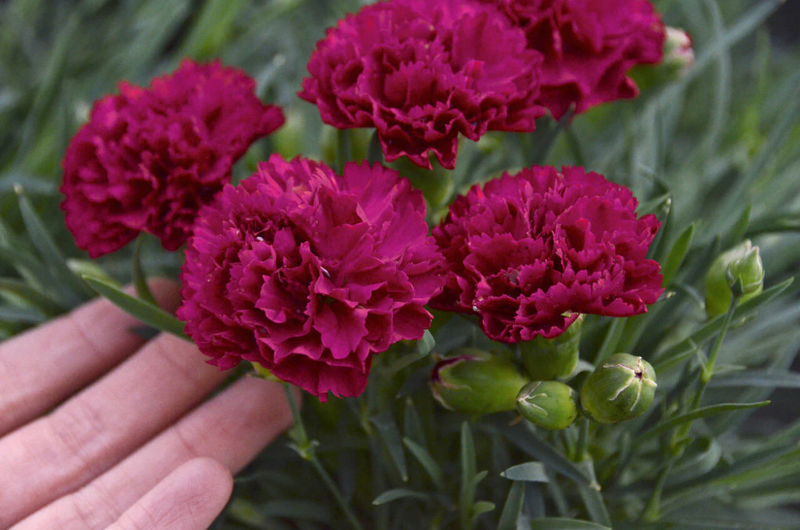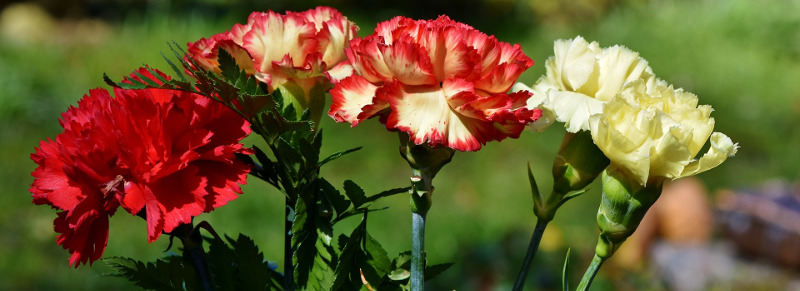Dianthus (commonly known as carnations or pinks) are an easy to care for perennial or annual plant. The flowers are ruffled at the ends, and sometimes have a very strong and spicy fragrance to them. The plants bloom during the summer and some can rebloom into the fall. One of the best ways to ensure that your plant produces the most amount of blooms as possible, is by deadheading the spent flowers. This encourages the plant to use its energy to grow more foliage and flower buds, rather than turning those old flowers into seeds.

How to Deadhead Dianthus
Follow these easy steps to properly deadhead your carnations and ensure the plant stays healthy, continues to thrive, produces as many flowers as possible and look beautiful all summer.
Step 1 - Wait until the flower petals begin to wilt, fade and fall off the flower bud.
Step 2 - Using shears or scissors, cut the flower stem down to the nearest set of leaves.
Step 3 - If you cut some leaves off, be sure to leave enough on the plant so it can continue to survive.
Step 4 - Continue to monitor the plant through the summer. Some types may only need to be deadheaded once or twice, while some may need attention every week.
When cutting the stems, look down from the top to see either another branch with a fresh flower bud growing from that stem. Those flowers below the main flower are known as lateral flowers, which are softer with rounded humps at the end. Try to cut immediately above the lateral flower or branch if possible.
Once all of the buds and lateral flowers are gone and done growing for the year. You can cut the stem back down to the base of the plant. Leave any branches with leaves and foliage intact so the plant can continue photosynthesis.

When To Deadhead Dianthus
Depending on what variety you are growing, you may need to deadhead at all times throughout the year. If you are growing the plants in a greenhouse, the plants may bloom all year, which means you will want to deadhead consistently for continuous flowering. Some early blooming dianthus (like Sweet William) will need to be deadheaded in spring. While other hybrids that bloom in the summer primarily will need to be plucked at that time. The main thing to remember is that if you notice dead looking flowers, pinch those off and the plant will hopefully grow even more flowers to enjoy!
Deadheading Dianthus Tips
- The plant will need to get full sun in order to produce the maximum number of blooms throughout the year. If the plant does not get enough sunlight, it may not produce as many blooms (if any at all).
- It is especially important to deadhead annual dianthus, to prevent the plant from producing seeds and spreading. If you want to collect seeds to grow more plants, or if you want the plant to spread naturally in the garden, then do not deadhead.
- Sterilize the shears or scissor with rubbing alcohol. This will minimize the risk of spreading diseases from plant to plant.
- You may choose to cut the flowers off before they start looking sad. That is perfectly fine, and will allow you to enjoy the cut flowers in an arrangement!

Pruning Dianthus
Some mounding dianthus plants can be trimmed back to help maintain the shape of the plant and to promote healthier branching. Any overgrown or leggy stems growing from the plant can be cut back any time during the summer growing season. Cut the leggy branches near leaf buds to help encourage branching at that spot in the stem.
 |
Author Chris Link - Published 12-07-2020 |
